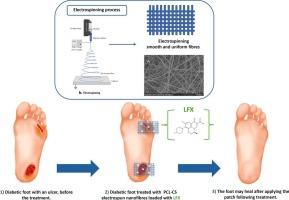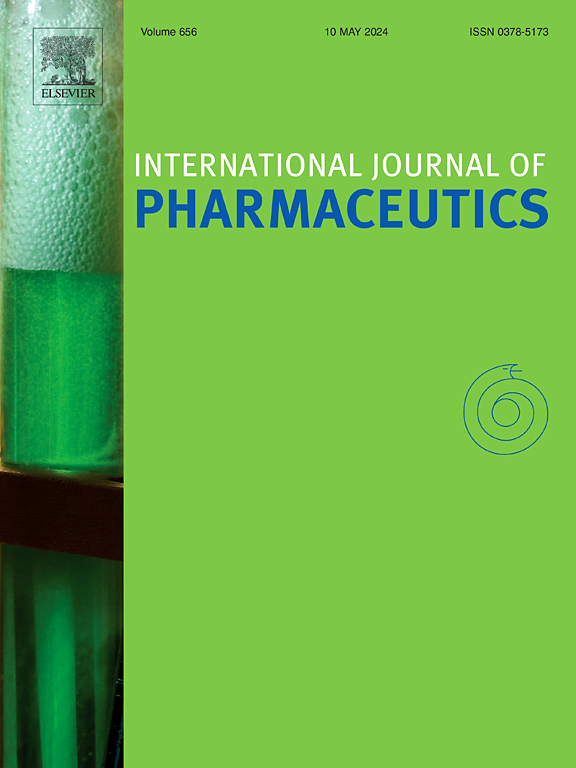Optimisation of Levofloxacin-loaded electrospun fibres for diabetic wound treatment
IF 5.2
2区 医学
Q1 PHARMACOLOGY & PHARMACY
引用次数: 0
Abstract
Foot ulcers are a common and serious diabetes complication, significantly affecting patients’ quality of life. Chronic diabetic wounds are difficult to treat and often resist conventional therapies. Recently, materials developed through emerging techniques have gained attention for use in wound care and tissue regeneration. This study explores the development of nanofibres through electrospinning to create therapeutic patches for diabetic foot ulcers. Electrospinning allows control over fibres composition, orientation, and diameter, offering advantages such as simplicity and adaptability. Key process parameters, including flow rate, applied voltage, and polymer concentration, were optimized to produce defect-free fibres. The antibiotic levofloxacin was encapsulated in the fibres to assess its controlled release profile. Additionally, blends of chitosan and polycaprolactone (PCL) in various solvent systems were studied to enhance fibre characteristics. The combination leverages the elasticity, mechanical strength, biocompatibility, and versatility of PCL. The resulting composite fibres had an optimal diameter of 400 nm. Drug release analysis showed an initial peak-crucial for antibacterial efficacy-followed by a slower, sustained release phase. This biphasic release is beneficial in preventing infection while supporting prolonged therapeutic action. The findings demonstrate that a carefully designed formulation strategy can optimize fibres performance, making electrospun nanofibers patch a promising tool in the treatment of diabetic foot ulcers.

左氧氟沙星负载电纺丝纤维用于糖尿病伤口治疗的优化。
足部溃疡是糖尿病常见且严重的并发症,严重影响患者的生活质量。慢性糖尿病性伤口很难治疗,而且经常抵抗常规疗法。最近,通过新兴技术开发的材料在伤口护理和组织再生中得到了关注。这项研究探索了纳米纤维的发展,通过静电纺丝来制造治疗糖尿病足溃疡的贴片。静电纺丝可以控制纤维的组成、方向和直径,具有简单和适应性等优点。优化了关键工艺参数,包括流量、施加电压和聚合物浓度,以生产无缺陷的纤维。将抗生素左氧氟沙星包封在纤维中,以评估其控释情况。此外,还研究了壳聚糖与聚己内酯(PCL)在不同溶剂体系中的共混,以提高纤维的性能。该组合充分利用了PCL的弹性、机械强度、生物相容性和多功能性。所得复合纤维的最佳直径为400 nm。药物释放分析显示了一个对抗菌效果至关重要的初始峰值,随后是一个较慢的持续释放阶段。这种双相释放有利于预防感染,同时支持延长治疗作用。研究结果表明,精心设计的配方策略可以优化纤维的性能,使静电纺纳米纤维贴片成为治疗糖尿病足溃疡的有前途的工具。
本文章由计算机程序翻译,如有差异,请以英文原文为准。
求助全文
约1分钟内获得全文
求助全文
来源期刊
CiteScore
10.70
自引率
8.60%
发文量
951
审稿时长
72 days
期刊介绍:
The International Journal of Pharmaceutics is the third most cited journal in the "Pharmacy & Pharmacology" category out of 366 journals, being the true home for pharmaceutical scientists concerned with the physical, chemical and biological properties of devices and delivery systems for drugs, vaccines and biologicals, including their design, manufacture and evaluation. This includes evaluation of the properties of drugs, excipients such as surfactants and polymers and novel materials. The journal has special sections on pharmaceutical nanotechnology and personalized medicines, and publishes research papers, reviews, commentaries and letters to the editor as well as special issues.

 求助内容:
求助内容: 应助结果提醒方式:
应助结果提醒方式:


